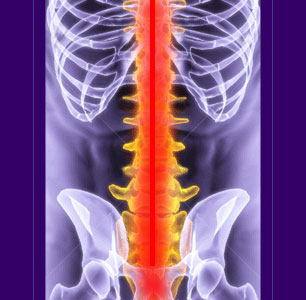
Central cord syndrome is the most often seen variety of incomplete cervical spinal cord injury. The condition typically presents itself in older patients and is most often related to injury combined with the existence of age-related spinal structure degeneration in the neck. CCS is one of the most treatable spinal cord traumas and many patients can recover completely or virtually completely using conservative care methods. Other patients may demonstrate the necessity to undergo invasive surgical treatment for unresponsive or progressively degenerative versions of CCS.
This patient guide defines and examines central spinal cord syndrome. We will discuss the causes of central cord syndrome, its symptoms and the most common therapy options, in order to help diagnosed patients to better their chances of recovery from this frightening and symptomatic neurological condition.
Central Cord Syndrome Defined
CCS is the most common variety of partial spinal cord injury located in the cervical spine. Spinal cord injury is defined as a condition that affects the functionality of the spinal cord in transmitting neurological motor signals from the brain to the body, and sensory signals from the body to the brain. Incomplete versions of SCI preserve some degree of functionality, so the spinal cord does indeed continue to send nerve messages, but its ability is impaired.
Being that CCS occurs in the neck, the effects are often far ranging in the anatomy, since all structures below the damaged spinal levels may be affected. Typically, in CCS conditions, the upper appendages suffer worse dysfunction than the lower, meaning that the arms and hands will be more dysfunctional than the legs and feet. This is not an absolute rule, however, as some patients suffer equal dysfunction or even worse dysfunction in the lower anatomy.
Causes of CCS
CCS most often presents itself in older patients who have been suffering from progressive osteoarthritic development in the cervical spine and subsequently suffer some type of hyperflexion or hyperextension trauma to the neck. Bony outcroppings of osteophyte tissue might traumatize the spinal cord during normal movement or during a singular injurious hyperextension event, such as drastic whiplash.
CCS cases found in younger people typically result from massive focal trauma to the cervical spine, such as those incidences stemming from motor vehicle collisions or significant falls. Cases usually involve displaced vertebral fractures that disturb the spinal cord, causing injury.
CCS conditions might include any of the following causes, factors, diagnoses and conditions:
Central spinal stenosis in the neck is a very common contributor to CCS, especially in combination with some form of moderate to severe acute trauma.
Myelomalacia is often seen in CCS patients, involving hemorrhaging of the spinal cord tissue and internal bleeding into the cord itself.
Myelitis can result from infection or trauma to the cervical cord.
Compression fractures can damage the spinal cord and are often causative factors in elderly patients and especially in older, obese patients who are diagnosed with CCS.
Symptoms of Central Cord Syndrome
Like all spinal cord injuries, the symptoms of CCS include diminished neurological functionality in providing motor innervation, and/or sensory perception to affected areas of the body. Since CCS occurs in the neck, large areas of the anatomy will be affected, with the worst deficits typically occurring in the upper limbs.
Many patients have difficulty performing controlled and dexterous motions with the arms and hands. Some patients also suffer significant balance issues and the inability to control their legs to a normal degree. Some patients can not stand or walk, while others demonstrate good lower body dexterity, strength and functionality.
Incontinence, constipation and sexual dysfunction are all relatively common symptoms that escalate the severity of CCS symptoms in a great number of cases. Some extreme cases of CCS will require the patient to be confined to a wheelchair or bed for life.
Central Cord Syndrome Treatment
Treatment for CCS can consist of conservative or surgical endeavors geared towards stabilizing the spinal cord, reopening the central spinal canal of any blockages or impingements, preventing further damage to the cord and allowing the body to regenerate as much natural functionality as possible.
Nonsurgical care may consist of cervical traction or the use of bracing orthotics or cervical halos to immobilize and protect the spine. Physical therapy is a crucial component of rehabilitative care and can also help to stabilize the spine after the acute phase of injury has resolved. Certain pharmaceutical products may also be employed in order to prevent or combat any related effects of cord injury, including infection, inflammation or bleeding.
Spinal surgery for CCS generally consists of decompression treatment of the central vertebral canal using a combination of laminectomy, corpectomy and or spondylodesis. Goals of surgical therapy are to restore the patency, alignment and contour of the spinal canal, in order to prevent further cord damage and facilitate any organic regeneration that might occur.





